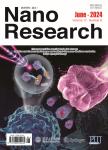Nitrogen-doped graphene quantum dots: Optical properties modification and photovoltaic applications
作者机构:Department of Physics and AstronomyTexas Christian UniversityTCU Box 298840Fort WorthTexas 76129USA Department cf Chemistry and EiochemistryTexas Christian UniversityTCU Box 298860Fort WorthTexas 76129USA
出 版 物:《Nano Research》 (纳米研究(英文版))
年 卷 期:2019年第12卷第5期
页 面:1041-1047页
核心收录:
学科分类:0808[工学-电气工程] 0809[工学-电子科学与技术(可授工学、理学学位)] 07[理学] 0805[工学-材料科学与工程(可授工学、理学学位)] 0702[理学-物理学]
基 金:TCU TCU Invests in Scholarship Robert A. Welch Foundation [P-1212]
主 题:nitrogen-doped graphene quantum dots ozone treatment optical properties photovoltaics solar cells
摘 要:In this work,we utilize a bottom-up approach to synthesize nitrogen self-doped graphene quantum dots (NGQDs) from a single glucosamine precursor via an eco-friendly microwave-assisted hydrothermal *** and optical properties of as-produced NGQDs are further modified using controlled ozone ***-treated NGQDs (Oz-NGQDs) are reduced in size to 5.5 nm with clear changes in the lattice structure and/D//G Raman ratios due to the introduction/alteration of oxygen-containing functional groups detected by Fourier-transform infrared (FTIR) spectrometer and further verified by energy dispersive X-ray spectroscopy (EDX) showing increased atomic/weight percentage of oxygen *** with structural modifications,GQDs experience decrease in ultraviolet-visible (UV-vis) absorption coupled with progressive enhancement of visible (up to 16 min treatment) and near-infrared (NIR)(up to 45 min treatment) *** allows fine-tuning optical properties of NGQDs for solar cell applications yielding controlled emission increase,while controlled emission quenching was achieved by either blue laser or thermal *** Oz-NGQDs were further used to form a photoactive layer of solar calls with a maximum efficiency of 2.64% providing a 6-fold enhancement over untreated NGQD devices and a 3-fold increase in fill factor/current *** study suggests simple routes to alter and optimize optical properties of scalably produced NGQDs to boost the photovoltaic performance of solar cells.



